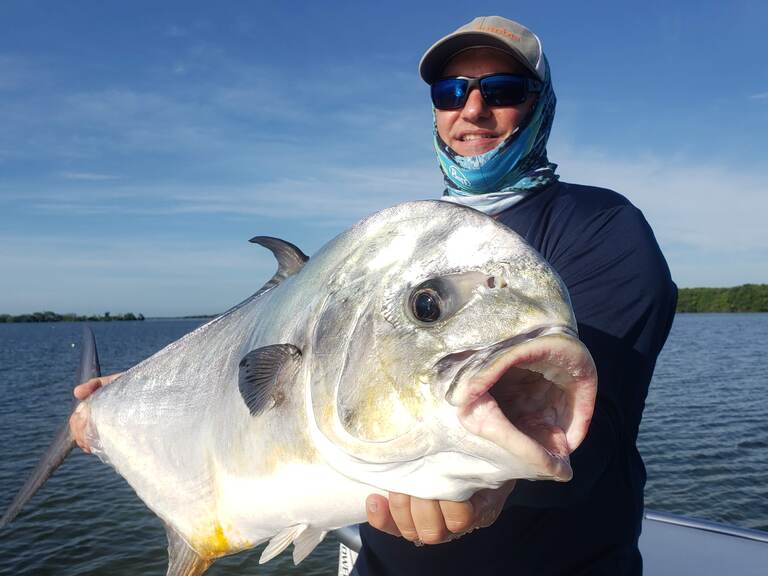Access and enforcement. That was the rallying cry from the almost unanimous calm and respectful capacity crowd that attended the December 9th meeting hosted by the National Park Service to obtain feedback to their two proposed alternative management plans for Biscayne National Park. At the core of the issue is a "Special Management Zone" spanning the shallow patch reefs from north of Elliot Key to roughly the outside of Cesar's Creek. This area has historically been a very productive span of shallow reefs for anglers, spear fishermen, snorkelers and commercial lobster fishermen but now its access is in danger. And while it appears there is a good faith effort by the NPS, they once again find themselves embroiled in a tug of war between end users, namely recreational anglers, conservation groups demanding full closures, and questionable scientific data. Here is where we stand, there are two alternatives to the general management plan of Biscayne National Park that will affect the park for the next 20 years. Alternative 6 and alternative 7 are practically identical with both implementing a 1,000'no wake zone spanning the entire length of the park's mainland shoreline, non-combustion zone for the featherbeds, Jones Lagoon, Swan Key and the Rubicons as well as a slow speed zone through the Adam's Key portion of Caesar's Creek. Both alternatives would also implement a "Special Management Zone" for the shallow patch reefs where it would prohibit anchoring except by way of an anchor buoy system, spear fishing or commercial fishing. However, where the alternatives differ is in the proposed "Special Management Zone". Alternative 6 would allow for year 'round fishing in the area through 400 plus permits that would be issued to applicants by way of a lottery system where alternative 7 would not require a permitting system but would close the zone to fishing during the summer months. Expectedly, there were many questions surrounding the management of the zone such as why so few permits would be issued, would permits be allowed to extend to other individuals onboard the permit holders vessel, how many buoys will actually be installed, by when the buoys would be installed and much more.
During the initial presentation the Park Service personnel flashed data reflecting a fisheries decline that would later become a focal point for the many speakers that took advantage of their three minutes to present their views. The fisheries data focused on the decline of four fish species over the last 15 years, mahogany snapper, yellowfin grouper, black margate and barracuda. The NPS presented these four fish as examples of the excessive use of the parks resources and the need for the restrictive Special Management Zone. The crowd at hand quickly indentified several issues that are worth mentioning. The first being the four species of fish used in the data are not targeted by recreational anglers, this raised suspicion by the crowd at the NPS's true intent. Secondly, the issue of enforcement was a hot topic as speaker after speaker provided anecdotal evidence to the lack of enforcement by the NPS and the FWC and their desire for additional enforcement personnel. Thirdly was the plan by the NPS to build a $4-$7 million dollar visitor's center on Virginia Key. While the visitor's center in Homestead is quite impressive, not much visitor traffic flows through it. The overwhelming sentiment of the crowd was that these resources would be better served in the use of hiring additional enforcement personnel to protect the true resources of our national park. While there were several user groups represented, anglers, divers, spear fishermen, commercial lobster fishermen and scuba divers, the majority represented were spear fishermen and all user groups represented themselves well. The impression the speakers left was one of a community of users who self police, care about and for the park and desire more enforcement of existing regulations not denied access because of lack of enforcement.
Although well represented, the angling community is in danger of taking a blow if either one of the alternatives is implemented as presented. This proposed zone will potentially close off a vital fishery for many of the professional fishing captains that make their living responsibly off this stretch of reef as well as many of the recreational anglers that also enjoy this area and support local business. Abundant data is already in existence that serves to prove the vital economic impact our local sport fishing community has on the local economy, certainly more than the tourist that visit the park for sightseeing or snorkeling purposes alone. The last thing our community wants is a depleted fishery but from my experience and those of my colleagues, we are far from it. There is still time to go o-line to www.NPS.gov/Biscayne and leave comments on the proposed alternatives. It is fitting to applaud the FWC for working with the NPS in coming to a less restrictive alternative (6 & 7) from what the Park Service had originally preferred. Due to the FWC, the Park Service prefers alternative 6 and the FWC is supporting this alternative but not the more restrictive alternative 7. Thank you FWC for bringing reason to this process and fellow anglers, fire up your laptops and leave your comments to the NPS ASAP!
Capt. Mo Estevez
www.MiamiBoneFishing.com


